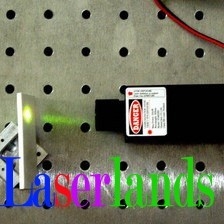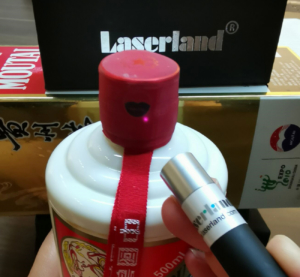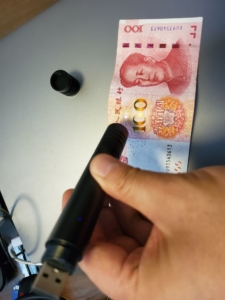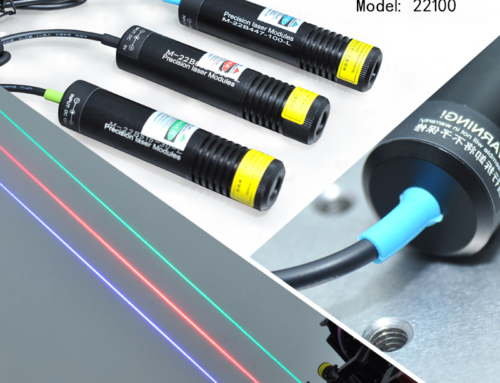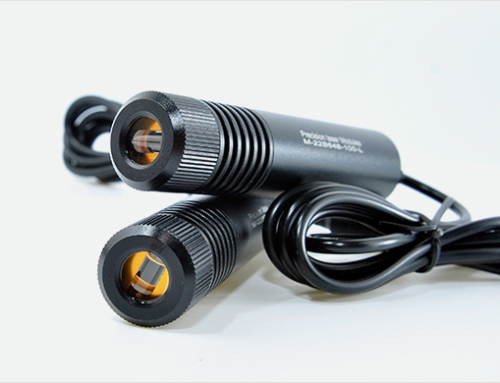Applications of Infrared Up-conversion Materials in Anti-counterfeiting and Trace Indentifying Technology
Key words: infrared up-conversion; changing infrared to visible light; anti-counterfeiting technology.
1. Principle
The general light excitation process follows the Stoke-Lomoli rule, that is, the maximum wavelength of the emitted spectrum of the excited substance moves in the long-wave direction relative to the maximum wavelength of the absorbed spectrum. This fluorescence phenomenon, which is excited by long-wavelength (lower energy) photons to obtain short-wavelength (higher energy) photons, is called anti-Stoke luminescence. This material is called anti-Stoke luminescent material. This kind of material can store the energy excited by visible light or ultraviolet light, and then release the stored energy in the form of visible light when excited by infrared light, so it is also called infrared up-conversion material, and this luminous process is also called infrared light. Change the visible process. Its characteristic is that it can absorb infrared photons with low energy and emit visible photons with high energy. The discovery of this new anti-Stoke luminescence phenomenon has not only profound theoretical significance, but also broad application prospects. In the 1970s, it was precisely because of the discovery of new anti-Stoke luminescent materials and the development of infrared variable visible technology , Only to make visible light-emitting diodes available.
Laserland 980nm Laser Diode Module Excite the Up-Conversion Material at the Display Card and turn the Non-Visible Infrared Laser Light into Green Light. Some clients of Laserland use this kind of laser module, dot type or Line model to identify or trace the fluorescent substance or fluorescence which is pre-set to the subject they want to relocate.
Laserland Infrared Laser Detector can identify the anti-counterfeiting area of MAOTAI, a high-end alcoholic drinks in China. It is said that it can detect certain areas in HENNESSY XO and other expensive wines.
2. Application
Infrared up-conversion materials have also been widely used in photoelectric technology, such as infrared detection of various semiconductor lasers, infrared light emitting diode emission tracking, beam correction of large lasers such as YAG, etc. Infrared laser detection board, which usually checks the light output of infrared laser in photoelectric laboratory, is actually an infrared up-conversion material doped with rare earth elements. Infrared up-conversion materials have been widely used in cathode ray luminescence, electroluminescent film luminescence, etc., and have shown obvious practical value in light storage, radiometry, infrared detection, etc., thus attracting people’s attention. The depth of research and the breadth of applications have been continuously explored, and great progress has been made. In addition, infrared up-conversion materials can emit light when excited by invisible infrared light, which produces a visual effect, which has also attracted the interest of anti-counterfeiting technicians.
Laserland Handheld Infrared Laser Detector can indentity the mark area of the cash bill of China. It appears a green dot in the disignated area. Some Russian customers use this detector to do some anti-fraud work for identifying fake stamps, cash bills, high-end wines.
3. Anti-counterfeiting applications
People have been exploring the application of infrared up-conversion materials in anti-counterfeiting technology for decades. The infrared up-conversion materials doped with rare earth elements are used to make colorless inks and make patterns, and then select high-power infrared light-emitting diodes as the excitation light source. The peak wavelength of the emitted near infrared light is 930nm-1064nm. Under the irradiation of this infrared light source, the handwriting printed with the ink prepared with infrared up-conversion material immediately appeared bright green, clearly visible. When the excitation light source is removed, the writing disappears immediately. Since the ink prepared with infrared up-conversion materials is colorless and the excited infrared light source is also invisible to the human eye, this technical solution obviously has a basic anti-counterfeiting function. In addition, this infrared up-conversion ink is also suitable for plastic films, which can be easily combined with the existing laser holographic anti-counterfeiting marks to play a comprehensive anti-counterfeiting role.
Develop infrared up-conversion materials that can emit light under the excitation of infrared light sources with special wavelengths. Currently, the infrared excitation wavelength of infrared up-conversion materials is usually in the range of 0.7 to 1.6 Lm, and three colors of red, blue and green (including yellow and green) have been developed. The infrared up-conversion material is combined with a special printing process in order to produce a special luminous effect under the excitation of an infrared light source. Encrypt the graphics printed on the infrared up-conversion material and combine it with anti-counterfeiting machine-readable technology. For example, using infrared up-conversion materials to print encrypted two-dimensional barcodes, messy background patterns with hidden information, etc. This can greatly increase the intensity of anti-counterfeiting. Combine infrared anti-counterfeiting materials with other anti-counterfeiting technologies to achieve the purpose of comprehensive anti-counterfeiting. For example, try to organically combine laser holographic anti-counterfeiting technology, magnetic anti-counterfeiting technology, network anti-counterfeiting technology, etc. to construct multiple lines of defense and increase anti-counterfeiting efforts.


